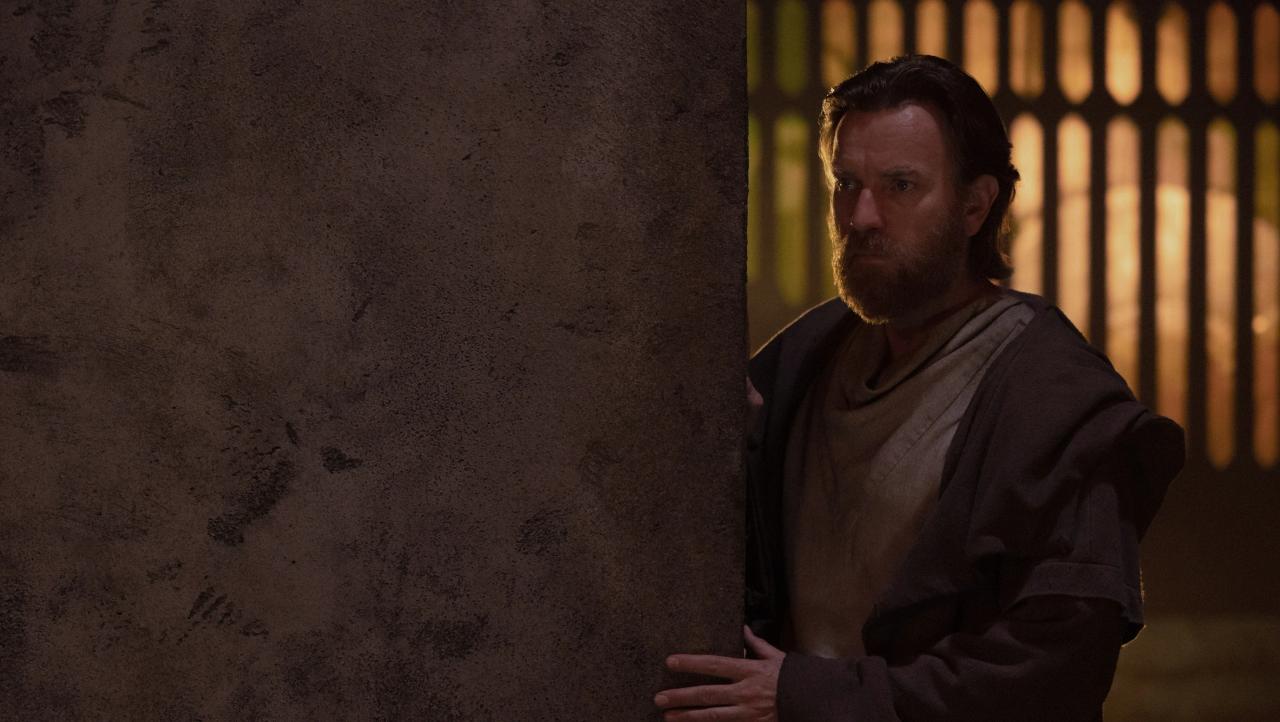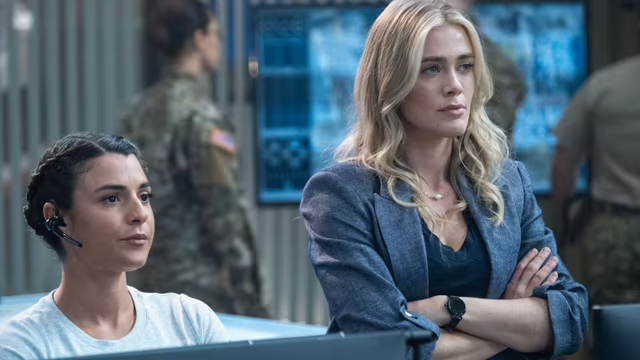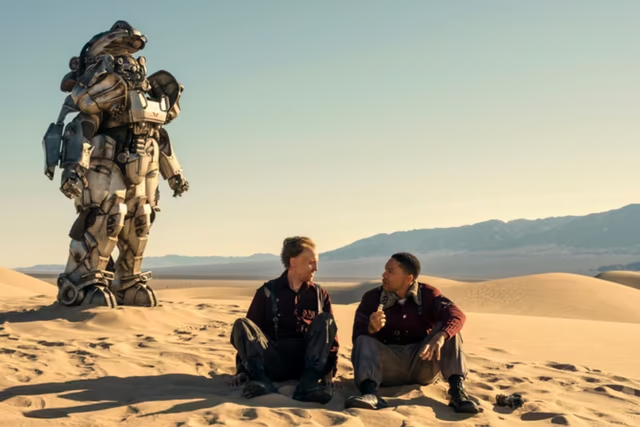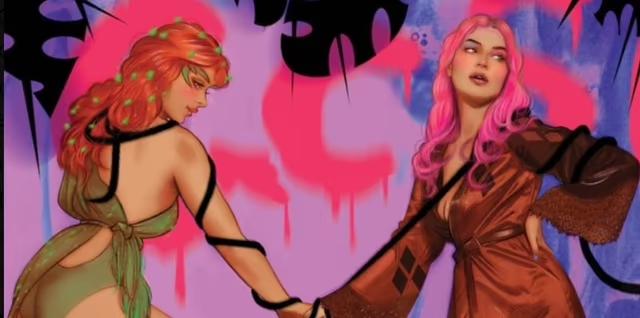If you click on a link and make a purchase we may receive a small commission. Read our editorial policy.
Obi-Wan Kenobi follows the footsteps of the Skywalkers to make peace with the past
How the parallels between each episode of Obi-Wan Kenobi and its numerically corresponding Star Wars film illustrates and informs Obi-Wan’s journey to process his grief and come to terms with his past.

Set ten years after the event of Revenge of the Sith, Obi-Wan Kenobi opens with its title character a broken husk of the man he was, haunted by his past. In the wake of the near-extermination of the Jedi by the nascent Empire and the seeming death of his one-time apprentice at his own hands, Obi-Wan has settled into a life of anonymous mundanity on Tatooine. Ostensibly he’s there to keep watch over Anakin’s son Luke and train him in the ways of the Jedi. But until that time comes, he is like a figure trapped in amber, consumed by his loss, unwilling or unable to grieve or move forward, doing nothing but waiting to prepare the next generation to fight the fight he’s lost.
The Obi-Wan Kenobi who closes out the series six episodes later is a changed man compared to where he starts, much closer in temperament to the wry, somewhat impish, portrayal of the character by Sir Alec Guiness in the original Star Wars from 1977. The six episode series is really the story of Obi-Wan grieving and making peace with all he’s lost – the loss of his brother, his family, his purpose, and all the familiar trappings of his previous life. But the series underscores this character arc in an unusual way.
Each episode of Obi-Wan Kenobi the series tips its hat to the Star Wars film with the numeric designation that matches the series’ episode via some combination of repeated dialogue, visual cues, and narrative parallels between the two story’s events. Far more than window dressing or fan service, these episode-to-episode parallels serve a thematic purpose. If the story of Obi-Wan Kenobi is the story of its title character processing his grief, the episodic parallels illustrate the way he goes about that process: by following the same mythological paths his two apprentices, Anakin and Luke Skywalker, followed in their respective stories. Just as each episode of the series contains nods to the film which shares its numeric designation, so too do Obi-Wan’s actions in each episode reflect in some way where the Skywalkers were on their own journeys at that time of their story. By following their paths, Obi-Wan emerges by series’ end a changed person, at peace with his past, and ready for the next step in his ultimate destiny.
Part 1 - The Phantom Menace

The overarching story of the Prequel Trilogy is the fall of Anakin Skywalker, the gifted and prophesied Jedi who breaks bad to become one of the galaxy’s worst villains. As such, the first three episodes of Obi-Wan Kenobi similarly bring the title character to his lowest point as he follows Anakin’s arc. At the start of this journey, the parallels between the series’ first episode and The Phantom Menace are fairly broad – without five more episodes of these kinds of parallels, it would be easy to dismiss the shared connections between the two as elements of basic storytelling. The key parallel in Part 1 is the respective calls to action, as both young Anakin Skywalker and the broken Obi-Wan Kenobi are plucked from lives of relative obscurity on the desert world of Tatooine (Anakin, a slave boy who fixes junk, Obi-Wan, a lapsed Jedi processing meat from a hulking carcass, sleeping in a roofless cave) by offworld visitors (Qui-Gon Jinn and Bail Organa, respectively). Both are required to leave behind someone they care about (Anakin’s mother and Obi-Wan’s charge, Luke Skywalker) in order to step out into a larger world. Furthering the connections between the two narratives, both Anakin and Obi-Wan are harried off Tatooine by near-encounters with red lightsaber-wielding Dark Jedi (Darth Maul and Reva, Third Sister of the Jedi-hunting Inquisitorius). By the end of Part 1 and The Phantom Menace, both Anakin and Obi-Wan have started on their respective paths, but neither are truly a Jedi, yet.
Part 2 - Attack of the Clones

Attack of the Clones isn’t the most thematically rich of Star Wars movies, and much of the events of Obi-Wan Kenobi Part 2 mirror, on the surface, Obi-Wan’s own Episode II storyline. In both cases, the character is operating like a private detective, moving through various social strata to solve a mystery (Who is targeting Senator Amidala/Where is the captive Leia?). Anakin’s arc in Attack of the Clones concerns his struggles with attachment and the ascendancy of his power, and Obi-Wan follows a similar trajectory in Part 2. The Obi-Wan who arrives on Daiyu at the start of the episode is worn down and out of practice. He carries his lightsaber yet exclusively uses a blaster (a weapon he decried as “uncivilized” in Revenge of the Sith). He is able to punch out some thugs, but the act of doing so takes a physical toll. He succeeds in rescuing Leia but needs the assistance of others to find a way off the planet. By the end of the episode, he is able to use the Force (the first time we see him do so in the series) in order to catch a falling Leia, but doing so takes a tremendous effort. This is not the seasoned Jedi master of Revenge of the Sith, but rather, like Anakin in Attack of the Clones, a functional Padawan who still has much to learn.
And like Anakin in Attack of the Clones, Obi-Wan ends the episode by experiencing a loss. For Anakin, it is the physical loss of his forearm to Count Dooku’s blade. For Obi-Wan, it is the revelation, delivered tauntingly by Reva, that Anakin Skywalker is still alive, that Darth Vader lives. Both losses foreshadow the lows the characters will experience in their respective third chapters.
Part 3 - Revenge of the Sith

Revenge of the Sith represents the culmination of Anakin Skywalker’s fall, the event to which the entire Prequel Trilogy had been building. It features Anakin at his lowest as he falls to the Dark Side, becomes Darth Vader, and effectively dies (from a certain point of view) on the fire-swept grounds of Mustafar, felled by his former master. The third episode of Obi-Wan Kenobi represents the low point (in the series) for the title character as well (and the point at which it becomes much more obvious that all the episodes’ nods to the numerically parallel film are intentional). Battered by the revelation that Anakin still lives, Obi-Wan spends much of the episode in a daze, shaken and untrusting of everyone around him.
When Darth Vader himself emerges on the scene, Obi-Wan is visibly rocked. He stumbles out to confront his former friend but is afraid and ineffective against him. Never has it been more clear that Obi-Wan is no longer the accomplished warrior of the Prequel era, the duelist who defeated General Grievious and nearly crippled Anakin. In a direct echo of Revenge of the Sith, Obi-Wan’s low point is punctuated when the ensuing (largely one-sided) rematch between he and Vader ends with Vader burning Obi-Wan in flames just as Obi-Wan once left Anakin burning on the banks of a Mustafarian lava river. Part 3 and Revenge of the Sith conclude in the same way, with their central characters hitting rock bottom amidst the fire.
Part 4 - A New Hope

Like Anakin, Obi-Wan survives his encounter with the flames thanks to the intervention of another; in Obi-Wan’s case, the Imperial defector Tala, who introduces him to the Path, a sort of proto-Rebel Alliance which helps protect Force sensitives being hunted by the Jedi. With the story of the fall of Anakin Skywalker in the Prequel trilogy concluded, at this point in Obi-Wan Kenobi, Obi-Wan begins to follow a new thematic arc, that of Anakin’s son Luke, the central figure of Star Wars’ Original Trilogy. Where Anakin’s story was one of the fall of a hero, Luke’s is about the rising of a new hero, and it is at this point in Obi-Wan Kenobi that the title character, having bottomed out in Part 3, begins his own hero’s journey.
Of all the Star Wars films, A New Hope is the purest presentation of George Lucas’ thoughts on the “monomyth”, the theories of Joseph Campbell and his belief in the common archetypes and shared attributes found in the character arcs of (largely Western) heroes. In A New Hope, Luke receives his “Call to Action," briefly “Rejects the Call,” then accepts his adventure, proceeding to “Storm the Fortress” of the enemy in order to rescue a princess, during which he experiences the death of his “Threshold Guardian” before ultimately triumphing. The various nods to A New Hope littered throughout Part 4 make it clear that Obi-Wan is now following this same path, as he hits some of the same story beats.
Tala, his Threshold Guardian who restores him to physical health and prods him to reconnect with the Force (just as Obi-Wan himself will later help Luke take his first steps into a larger world) helps him infiltrate an Imperial stronghold to rescue the captive Leia, just as Luke stormed the Death Star to rescue the older Leia in A New Hope. Following his complete domination by Vader in Part 3, Obi-Wan is tentatively reconnecting with the Force and (re-)honing his martial skills in Part 4. One of the key moments in Luke’s training comes when he learns to deflect blaster bolts with his lightsaber; similarly one of the first lightsaber techniques Obi-Wan displays in Part 4 is a similar ability to defend himself by batting away blaster bolts. Leia is the object of both character’s quests, and in both circumstances, she is tortured (or nearly tortured) by a figure of dark Force abilities. Like Luke, Obi-Wan dons a disguise to navigate the fortress he’s infiltrated, and like Luke, while he succeeds in rescuing Leia, his escape is a pyrrhic one, as the Imperial forces are tracking his escape craft back to a rebel base.
Part 5 - The Empire Strikes Back

The parallels between Obi-Wan Kenobi Part 5 and The Empire Strikes Back are perhaps less obvious than the previous episode’s mouse droids and common Imperial architectural choices, but they exist, and continue to point to how Obi-Wan is continuing to walk in the shadows of Luke’s Hero’s Journey as he makes peace with the past. Just as Luke opens The Empire Strikes Back by leading a defense of the Rebel base on Hoth in order to buy the bulk of the Rebellion time to escape, here Obi-Wan leads a similar effort to repeal an Imperial force arrayed against a base containing rebels, in the hopes of buying them enough time to escape.
One of the more thematically rich sequences in The Empire Strikes Back is Luke’s trip inside a cave on Dagobah, in which he battles a vision of Darth Vader cast in Luke’s image. Jedi Master Yoda makes a point of telling Luke he won’t need his weapons, but Luke brings them anyway. In Part 5, Obi-Wan comes face-to-face with his own dark mirror in the series, Reva, for the first time. He learns Reva is a survivor of the Jedi Purge Darth Vader perpetuated, and is in fact secretly working against Vader (this revelation parallels the Luke/Vader reveal at the end of Empire Strikes Back, and at this point, Reva herself takes up some of Luke’s Hero’s Journey, walking in his Empire Strikes Back and Return of the Jedi footsteps as well for the rest of the series-- but that’s another article).
The important piece here for the progression of Obi-Wan’s arc is that after his encounter with Reva inside the (cave)rnous rebel base, Obi-Wan decides to use Vader’s obsession with him to his advantage and pointedly stops fighting, realizing he has a better chance of helping the rebels by keeping Vader focused on him (he even gives up his weapon at one point, learning the lesson of the cave faster than Luke does). And like Luke in The Empire Strikes Back, who is told if he confronts Vader, he will do so without the aid of his Jedi mentors, Obi-Wan’s path forward no longer contains his Threshold Guardian, as Tala is killed defending the base before Obi-Wan can successfully execute the evacuation.
Part 6 - Return of the Jedi

In Return of the Jedi, Luke Skywalker has come into his power, but before he can complete his ascendancy and finish his Hero’s Journey, he must confront Darth Vader once more. So too has Obi-Wan, following a path similar to Luke, come to accept that in order to truly heal and move beyond his past, he must face Vader once more. The ensuing duel between Obi-Wan and his former apprentice echoes the Luke/Darth Vader battle in Return of the Jedi, with Obi-Wan ultimately fighting until he has Vader at his mercy, just like Luke would later do. Like Luke, he comes up short of killing Vader, instead (metaphorically) throwing aside his lightsaber like Luke and choosing the Jedi way of compassion and mercy (an act which makes sense thematically for Obi-Wan’s journey, but very little sense in any other context). Like Luke, Obi-Wan even manages to physically expose some of Anakin Skywalker beneath the mask of Vader, though tellingly, he only manages to partially do so: Anakin Skywalker’s redemption remains to be completed by another.
But the culmination of the duel marks the end of Obi-Wan’s healing journey in the series. He began it crushed under the weight of past events, grieving the loss of his brother, and haunted by the actions he took against Anakin. When he learns he didn’t kill Anakin, but rather helped birth a monster, he spirals even further down, into a literal crucible of Vader’s making as he burns Obi-Wan at the end of Part 3. Yet here, it is Vader who gives Obi-Wan the final absolution, telling him that Obi-Wan didn’t kill Anakin, Vader did. It is a distinction that Obi-Wan will take to heart – they are the words he will echo later to Luke in Return of the Jedi, as he urges Luke to separate his feelings for his father from the need to stop Vader.
Thus, by the time Obi-Wan rides off into the sunset at the end of the series (an ending punctuated, like Return of the Jedi, by the appearance of a Force Ghost), he is a far different person than he was six episodes prior. He is neither fully the original Alec Guiness Obi-Wan nor quite again the confident Jedi general of the Prequel Trilogy. But by echoing the mythological arcs of both Anakin and Luke Skywalker across their respective trilogies, with each episodic step in Obi-Wan’s journey illuminated by visual and thematic callbacks to the Star Wars film which shares its episode number, Obi-Wan has processed his grief, and emerged a better man.
George Lucas somewhat famously once said of the Star Wars films “It’s like poetry, sort of. They rhyme.” Rarely has that ever been more true than in Obi-Wan Kenobi, in which Obi-Wan’s odyssey to make peace with his past rhymes both with Anakin Skywalker’s fall from grace, and Luke Skywalker’s journey to become a hero.
The Long Star War: Reframing Star Wars through the lens of real-world history
Follow Popverse for upcoming event coverage and news
Find out how we conduct our review by reading our review policy
Let Popverse be your tour guide through the wilderness of pop culture
Sign in and let us help you find your new favorite thing.
















Comments
Want to join the discussion? Please activate your account first.
Visit Reedpop ID if you need to resend the confirmation email.